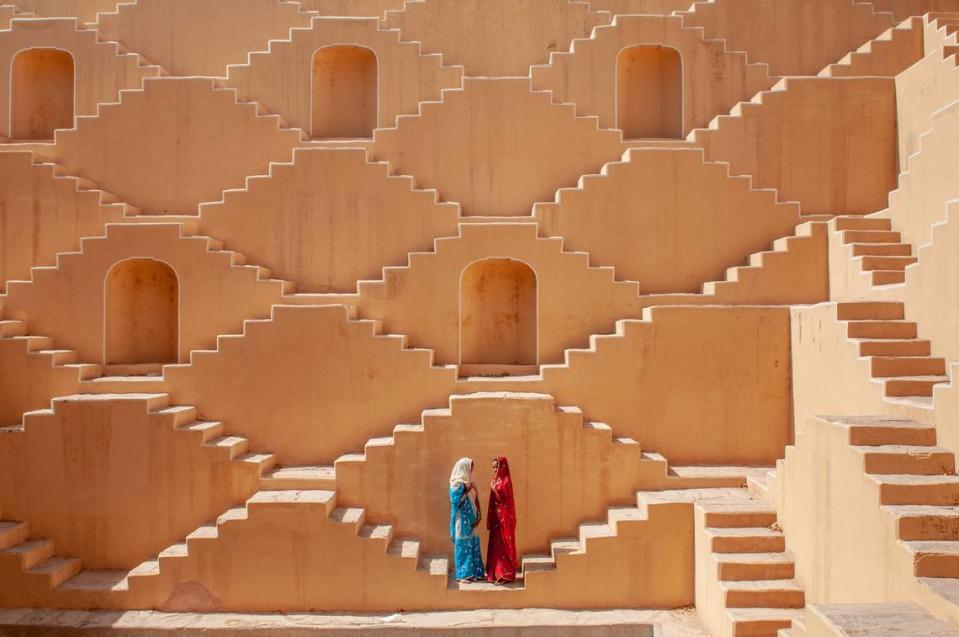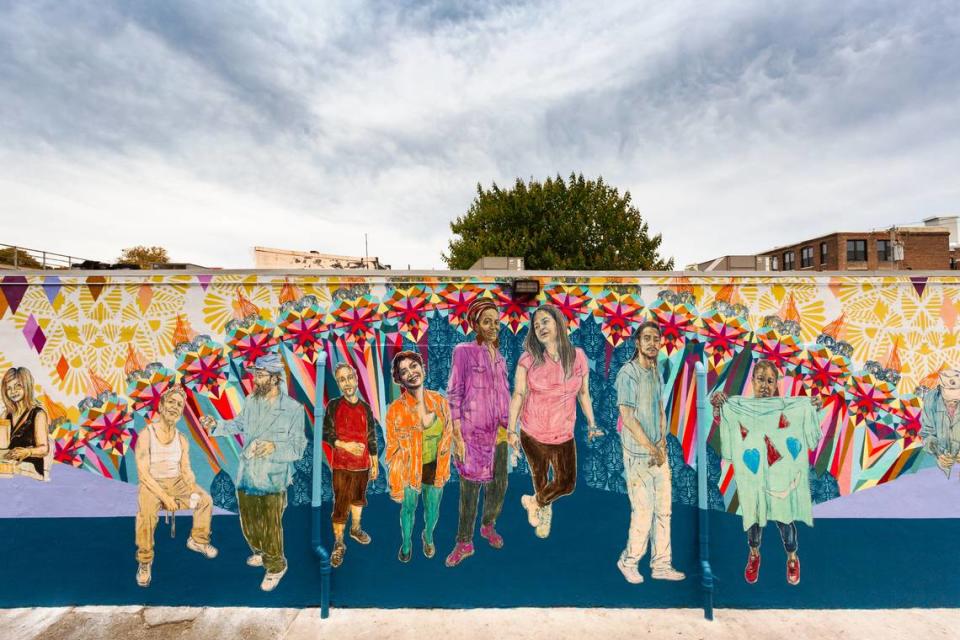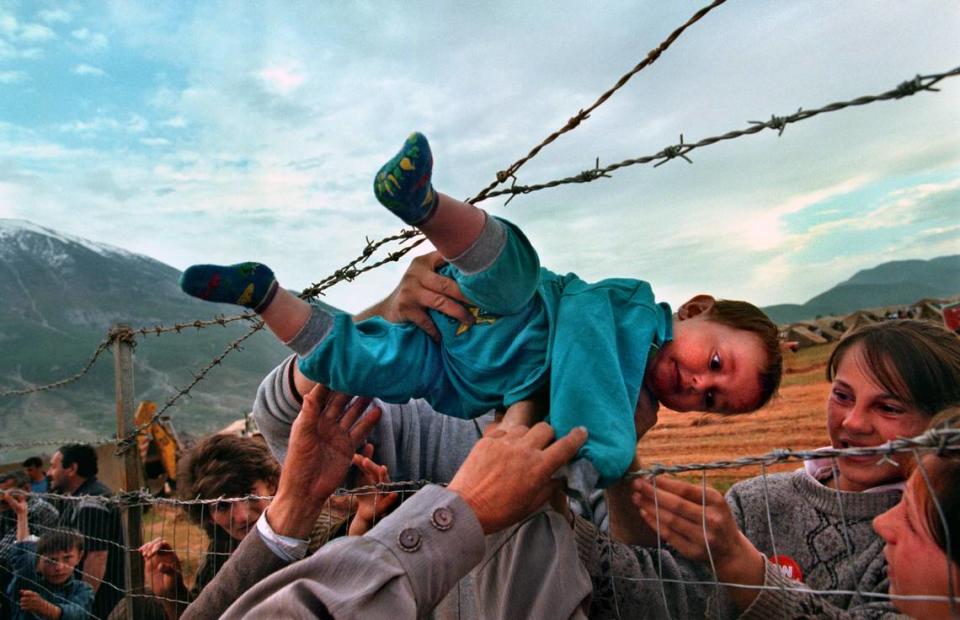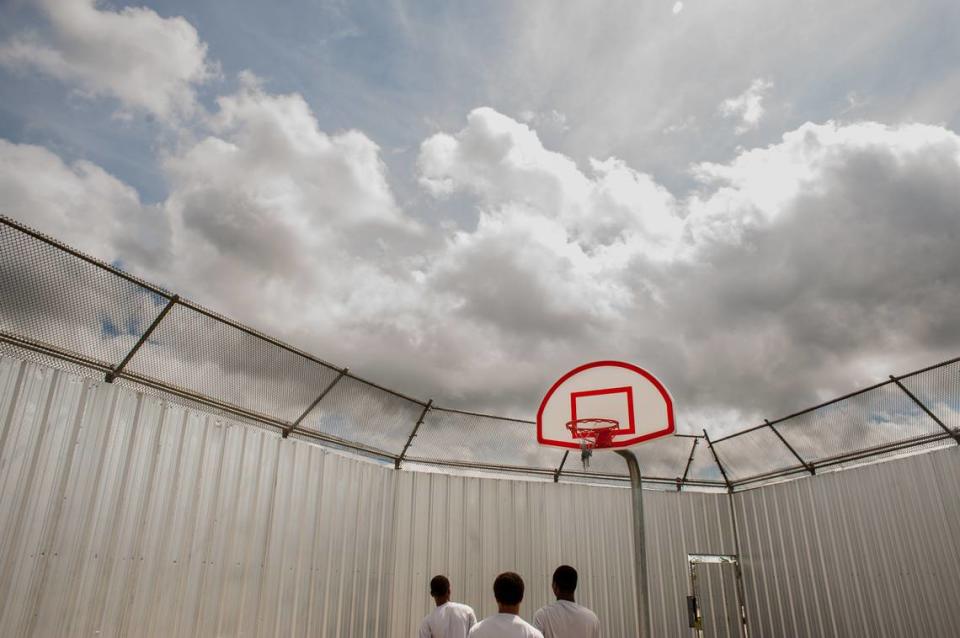Mint Museum exhibit examines complexities of border walls around the world
Fences and borders are not a national phenomenon.
“(They’re) a human response to anxiety and perceived threats,” said Jen Sudul Edwards, the chief curator and curator of contemporary art at the Mint Museum in Charlotte. “Walls have existed throughout time, throughout the world.”
On Feb. 24 an exhibition called “W|ALLS: Defend, Divide, and the Divine” opens at Mint Museum Uptown. It includes more than 120 photographs of barriers, borders, fences and walls around the world. It’ll be at the museum through July 25.
Walls such as the Berlin Wall, Great Wall of China, Hadrian’s Wall, the U..S-Mexico border wall and the Western Wall are included. A 26-minute documentary on the exhibition, which includes interviews with photographers, will play in the galleries.
The exhibit was originally slated for May but COVID-19 forced the Mint to reschedule.

Our relationship with walls
In 2018, Katie Hollander, former director of the Annenberg Space for Photography in Los Angeles, got an idea for an exhibit: Display photographs of borders and walls throughout the world.
The idea was inspired by the 30th anniversary of the fall of the Berlin Wall and the current focus in the United States on the border wall with Mexico.
“The Berlin Wall coming down was a huge cultural phenomenon of our generation,” Edwards said. “We were quite surprised that that sentiment could be lost so quickly.”
When Edwards and Hollander started researching, they found that despite the celebration of the Berlin Wall falling, many new border walls have been built since then to separate nations. According to a 2018 USA Today story, there were 15 such walls in 1989. There are now 77.
“Our relationship with walls has evolved throughout time, depending on the situation,” Hollander said. “Walls and our relationship (with them) are complicated and multifaceted.”

Telling a broad story
Edwards and Hollander needed powerful images of walls around the globe.
They didn’t want walls that were all negative or all political. The exhibit would be a historical narrative, not unique to this moment in time, said Hollander.
Although they strove to tell a broad story in terms of geographic location, it came down to what quality images could be found and reproduced. Many photos were lost or couldn’t be enlarged. Meanwhile, two photographers, Moises Saman and SHAN Wallace, were commissioned to shoot specific walls.

“A lot of the sources we went to were photojournalists because those are people who are really traveling the world,” Edwards said.
“So many of these border barriers were coming out of political stories,” she said. “Photojournalists take pictures quickly. They have a sharp eye and they create compelling images because editorially it’s necessary for people to be attracted to the story.”
It took 18 months for Edwards to research and curate the exhibit. It features images from five continents taken by more than 60 photographers, including Oded Balilty, Carol Guzy and Harf Zimmermann, as well as local photographers Will Jenkins, Uncle Jut and Linda Foard Roberts.
Jenkins’ photograph of muralist Dammit Wesley’s “Strange Fruit” in uptown Charlotte is part of the W|ALLS exhibit.
“The mural gives those of us who don’t normally feel welcomed the opportunity to feel like we can finally see ourselves in the work that populates the area,” Jenkins said. “(It) tells a deep story that reveals the continued division in our community. I’m grateful that my photograph gets the opportunity to start that much-needed conversation.”

Organizing the exhibit
Images in the exhibit are displayed in six sections: Delineation, defense, deterrent, the divine, decoration and the invisible. Photos are accompanied with detailed descriptions of the wall and its history to give museum visitors context.
“Because we had so many images, it became very overwhelming, very quickly,” Edwards said. “I knew it was going to be more straight forward and easier on the audience and on us, curatorially, to separate this show into six sections.”
The sections each represent a theme. Decoration includes images that show how a wall was used as a canvas for creating art, making a political statement or laying claim to an unwanted control system.
“Walls morph over time,” Edwards said. “It depends who is using them and what side you’re standing on to know what it means.”
W|ALLS first exhibited at the Annenberg Space for Photography in 2019. The museum has since closed.
Edwards hopes the reaction to the show in Charlotte will be similar to that in Los Angeles.
“People were very thoughtful about the show,” Edwards said. “They came in and they really spent time looking at the images, reading about the backgrounds for the images. People were patient with it, which was wonderful.”
Transforming walls
Baltimore-based Wallace was commissioned to photograph the Eight Mile Wall in a neighborhood in north Detroit for the exhibit.
She spent a week in the community speaking to residents, some of whom lived there when the half-mile wall was built in 1941. Its purpose was to separate the Black community from the white community. When Wallace arrived, she expected to tell a specific narrative she had laid out in her mind.
“I was going to investigate and tell this particular story,” Wallace said,” but it really transformed into something different. I realized that that community took on this history and took on this wall and transformed it for themselves. And defined it for themselves.”
The wall is 1-foot wide and 6-feet tall, and has been torn down in some areas to make room for streets. In the years it has been up, houses and a park grew around it. In the early 2000s murals were painted on parts of the wall. Grandparents take their grandchildren there to see the artwork.
“The Eight Mile community uses this wall as a sense of pride,” Wallace said, “and as a testament to how far they’ve come. Detroit’s history is embedded into this project.
“I think it can be embedded into what we know about walls and infrastructures that separate and segregate us,
Wallace added. “I’m thrilled that Detroit is part of this conversation. I hope people realize that we have this infrastructure in some of our cities.”
‘W|ALLS’
What: “W|ALLS: Defend, Divide, and the Divine” is a photography exhibit of more than 120 images that focus on walls and borders across the globe.
When: Feb. 24-July 25
Where: Mint Museum Uptown, 500 S. Tryon St.
Cost: Adults, $15; Seniors, students, teachers, $10; Children 5-17, $6
Details: mintmuseum.org/walls/
COVID protocols: The museum is operating at 35% capacity with timed ticketing in place. All visitors must wear a mask. For more information go to mintmuseum.org.
This story is part of an Observer underwriting project with the Thrive Campaign for the Arts, supporting arts journalism in Charlotte.
More arts coverage
Want to see more stories like this? You can join our Facebook group, “Inside Charlotte Arts,” at https://www.facebook.com/groups/insidecharlottearts/
You can find all of our arts season preview stories in one place: https://www.charlotteobserver.com/topics/charlotte-fall-arts-2020

